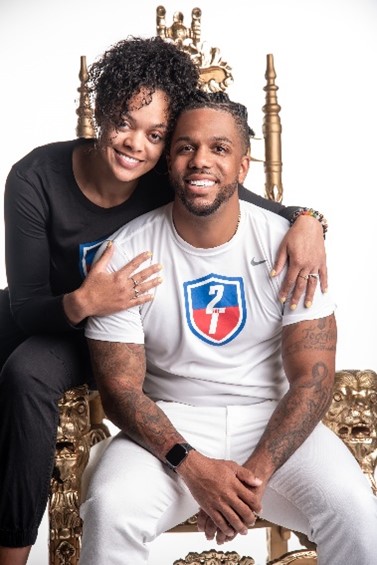Patient or Advocate: Tymiak Hawkins
Disease Affiliation: Cavernous Malformation, Wallenberg Syndrome, Horner Syndrome

Tymiak after his stroke (Rare Revolution Magazine)
My name is Tymiak Hawkins and on June 5, 2019, I was diagnosed with a cavernous malformation which was discovered after having a hemorrhagic brainstem stroke. In the early hours of that day a God-like figure came to me in a dream and said, “It’s time to go.” I had been experiencing issues with headaches, balance, coordination, and vision, and I knew that the figure was urging me to go to the hospital. I faced a grim diagnosis based on statistics; I was given only a 26% chance of survival and a 10% chance at a full recovery.
I was blindsided by this—I had felt that I was in good health. I was an athlete and was only four years removed from my college basketball career at Fairleigh Dickinson University-College at Florham. I went from playing basketball to having to relearn to walk and run. Despite the odds being stacked against me I was able to make a miraculous recovery.
I am native of Philadelphia, but now I reside in Hillsborough, NJ with my wife, Rachel. I received my B.A. in communications from Fairleigh Dickinson University in 2015, but since my diagnosis, in addition to my book, I co-founded 2 The T, a brand I created with my brother Tya’ron, who also was diagnosed with a cavernous malformation. Our aim is to spread awareness about brain health.
Based upon epidemiology and diagnostic rates of other races, there should be about 20,000 Black Americans affected by CCM and symptomatic. However, across the largest national CCM databases, there are fewer than 100 Black patients. While CCM is no more common among Black Americans than other Americans, the missing patients represent a critical disparity in terms of diagnosis, care, and research.
Recognizing these barriers to detection has led Angioma Alliance to create the Breaking Barriers Initiative for Black Cavernous Angioma patients. Angioma Alliance has had a very successful Hispanic outreach program addressing a population with a founder mutation in the Southwest. Given the proper resources, we know how to create programs that reach underserved populations. The initiative hopes to become a blueprint for other rare diseases to decrease disparities amongst Black patients.
For more information, follow Tymiak on Instagram @twothet2.0, visit www.tymiakhawkins.com
Read more about Tymiak’s story at Rare Revolution Magazine

Tymiak and his wife, Rachel (Rare Revolution Magazine)

Stay Connected
Sign up for updates straight to your inbox.
